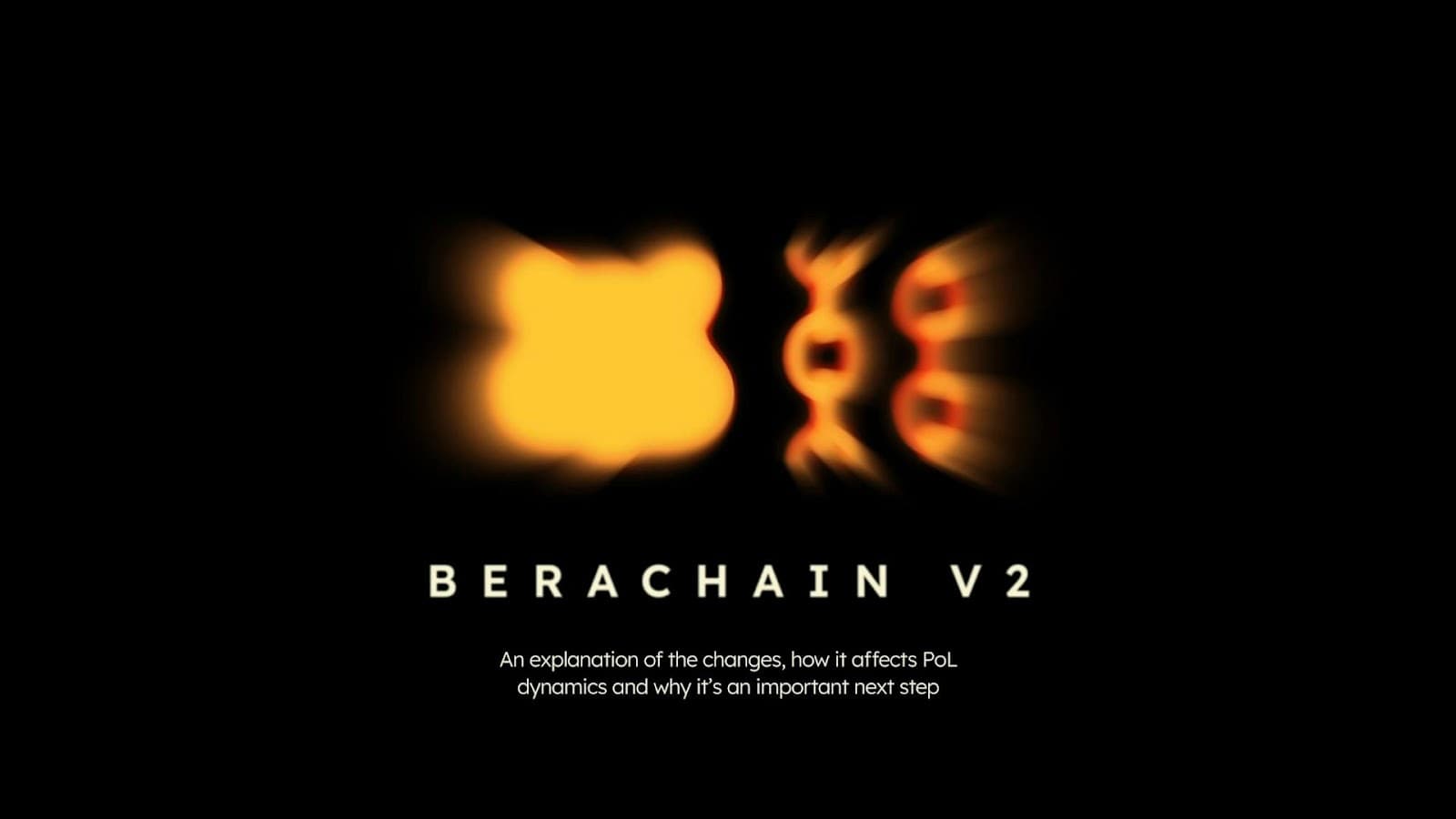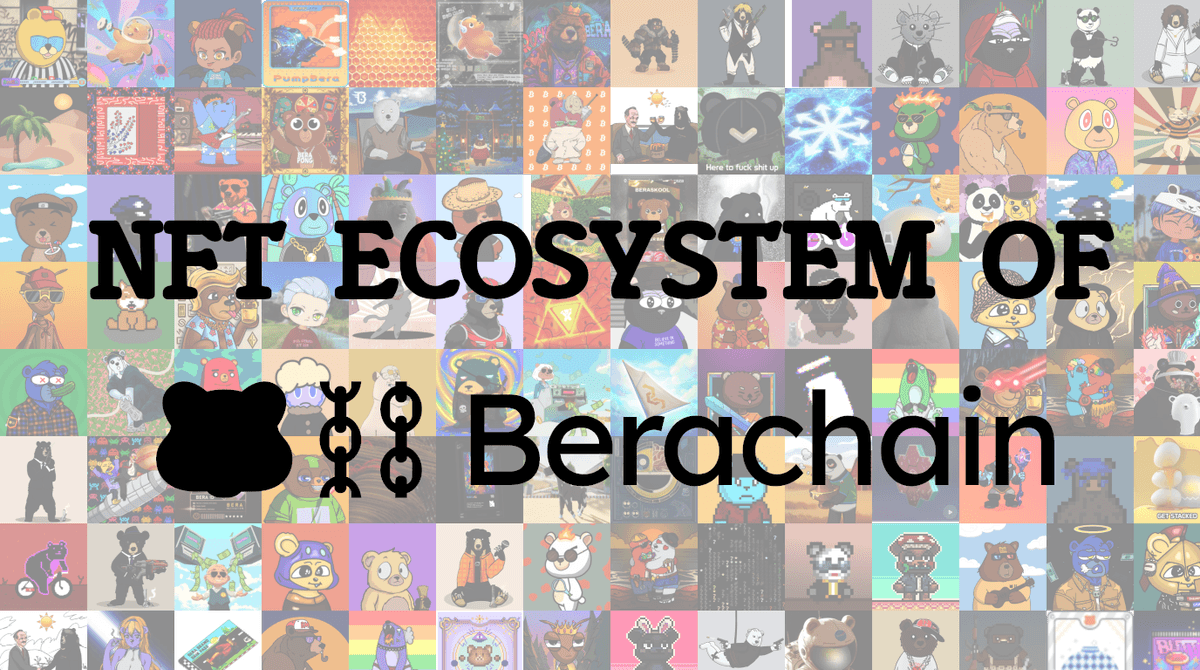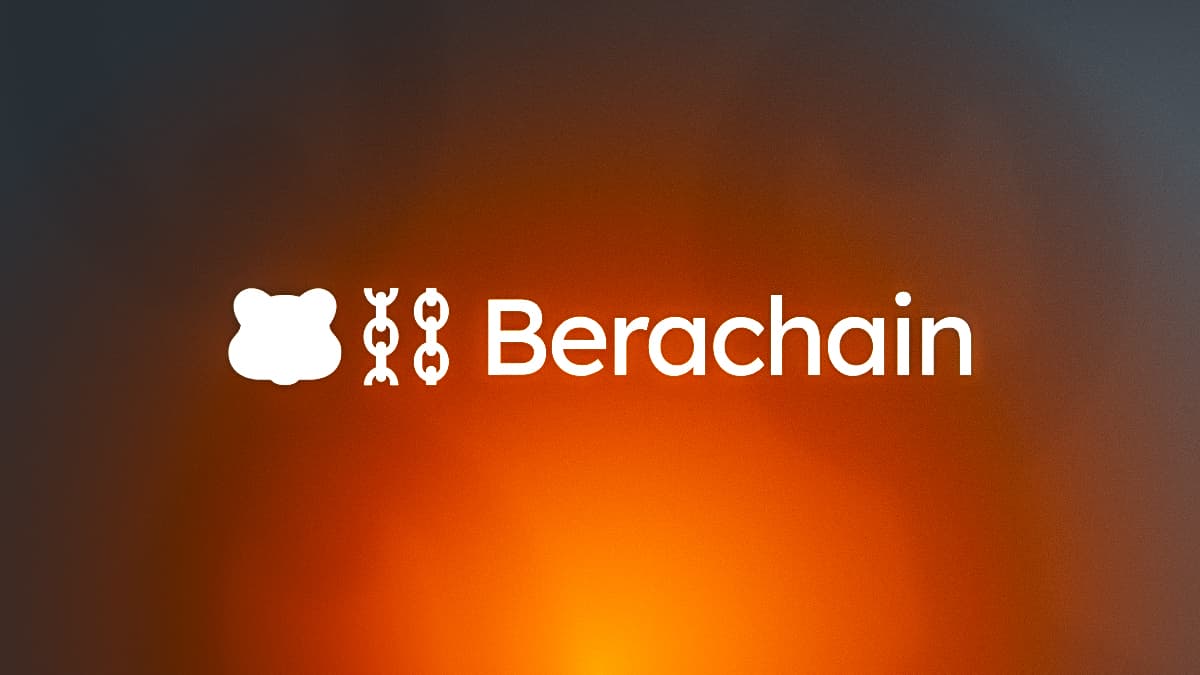Key Takeaways
- Proof of Liquidity (PoL): Berachain's unique consensus mechanism aligns validators, users, and dApps to ensure liquidity flows across the network.
- BeaconKit Integration: V2 introduces BeaconKit, a modular framework that enhances EVM execution and scalability.
- EVM-Identical: Berachain is now EVM-identical, improving developer experience and reducing bottlenecks.
- Validator Updates: V2 increases the number of validators and enhances staking incentives through BGT and BERA tokens.
- Improved Scalability: Focused on resolving V1 bottlenecks, enabling better DeFi application performance.
If you're interested in Berachain, explore our dedicated section filled with blog posts and comprehensive guides: https://daic.capital/blog/category/Berachain
Berachain Refresher
To refresh your memory, Berachain is a modular Ethereum-compatible CometBFT-enabled Layer 1 blockchain. At this time in the evolution of open public blockchain systems, most protocols are built using Proof of Stake (PoS) consensus. However, most PoS chains and their related ecosystems suffer from issues especially related to limited security and fractionalized liquidity.
Fractionalized liquidity sometimes occurs when the liquidity within a blockchain and its underlying ecosystem of dApps and use-specific protocols (often existing within on-chain liquidity pools) dries up and becomes liquidity debt.
As a foremost solution to these challenges, Berachain built a newfound consensus mechanism called Proof of Liquidity (PoL) which was conceptualized to align multiple network incentives by initiating a synchronistic relationship between Berachain validators, users, and all projects building atop the larger Berachain L1.
What’s more, PoL is built to improve network security by distributing liquidity to a suite of DeFi protocols that operate on top of the blockchain itself; namely an AMM DEX, a lending and borrowing platform, and a perpetual futures exchange.
Through Proof of Liquidity and via the introduction of Berachain’s tri-token system (composed of BERA, BGT, and HONEY), the Berachain platform is ideated in a way that allows liquidity to consistently flow between the network’s validators, users, and ecosystem participants by employing a multi purpose feedback loop that helps guide protocol functionality and governance.
This flywheel effect is fulfilled through the redemption of incentivized BGT for validator staking and the use of the protocl’s DeFi suite. In addition, the protocol also leverages numerous additional mechanisms that allow network participants to earn HONEY and BERA.

Proof of Liquidity and the Ethos of V2
In many respects, newly-constructed blockchain architectures are often built for developers, employing features and functionality that only they can truly appreciate. The definition of what constitutes modular as it relates to blockchains is not clearly defined. That said, much of the debate pertains to blockchain processes occurring behind the scenes, with users typically not being center stage.
Berachain V2 approaches its design from the opposite juncture, crafting a modular blockchain that remains faithful to its core ethos of aligning incentives and galvanizing user behaviors through Proof of Liquidity. It’s worth bearing (yes literally, not that kinda bera) in mind that Berachain V2 isn’t a full chain rewrite, but a platform built to solve V1's most pressing challenges.
It's important to note that most of the changes that accompany V2 are related to Berachain’s technical architecture, ensuring that its tri-token model, Proof of Liquidity consensus, and liquidity incentivization structure remain largely unchanged.
The design of Berachain is extremely innovative when compared to many public blockchains. However, after a huge number of users took to Berachain’s Artio testnet in recent months performance bottlenecks occurred during platform testing (related mainly to the huge number of DeFi suite users), it became clear that some changes were required. Therefore, the decision to enhance V1 by releasing V2 seemed to be an obvious next step.
One of the main features that sets Berachain apart from other chains is its innovative Proof-of-Liquidity consensus mechanism — a system designed to create a reciprocal flywheel effect that balances incentives between validators and ecosystem participants (users and applications) to furnish a shared set of objectives for scaling economic security and liquidity simultaneously.
Berachain strongly believes in the premise that a chain is ultimately the sum of the applications built atop it. Case and point, Proof of Liquidity is an accelerant for Berachain’s application layer. At a basic level, Berachain is an EVM-identical L1 that cycles liquidy into security though the PoL framework.
Moreover, Berachain is arguably the first example of a decentralized blockchain that autonomously incentives the flow of rewards toward applications and creators through the block production process. Essentially, Proof of Liquidity is built for the people and meant to act as the canvas for infinite economic games.

Berachain V2: A Modular EVM Equivalent Platform via BeaconKit
To help address some of the challenges Berachain V1 faced, one of main decisions Berachain made was to eliminate the Polaris Virtual Machine because of the fact Berachain’s V1 EVM execution was coupled closely with CometBFT consensus, meaning the chain’s mempool struggled to keep up with the growing demand for blockspace as the platform broke records as more and more users continued to use the network.
Exceeding the limits of Polaris during its main incentivized testing phase proved that a new approach to consensus and execution was required prior to mainnet launch. To replace Polaris, the team spent a lot of time designing and building BeaconKit, its newly iterated modular EVM development toolkit designed to dramatically improve the overall Berachain experience.
By harnessing the capabilities of BeaconKit to build on principles standardized by ETH2’s (now known as the Ethereum Consensus Layer) modular separation of consensus and execution, developers are now able to leverage any execution client on Berachain V2 while utilizing the EngineAPI.
Specifically, BeaconKit resolves many of the challenges that plagued Berachain V1 via its ability to harness Reth (the Rust implementation of Ethereum), Geth (the Go implementation), Nethermind, and nearly any Ethereuem execution client in existence.
One of the main challenges that limited the performance of V1 was the propensity for execution clients to gossip unnecessary transaction info to the protocol’s mempool. V2 addresses this issue through the introduction of single-slot (instantaneous) finality which was previously impossible on Polaris.
By combining Berachain V2 and BeaconKit synergistically, the platform becomes EVM identical as opposed to EVM compatible via Polaris precompiles. By leveraging an ETH2-like (now called the Ethereum Consensus Layer) system that is identical to the EVM developer experience that is so readily familiar and combining it with next-level UX through Proof of Liquidity, Berachain V2 represents a cutting-edge blockchain in technological terms, especially for smart contract development.
As a reminder, Polaris also utilized ComeBFT but struggled due to its inability to separate consensus from consensus and execution. On Berachain V1, combining these two functionalities resulted in an issue where the network continually hit an execution bottleneck due to the excessive number of transactions that Polaris couldn’t keep up with. BeaconKit eliminates the Polaris implementation of precompiles for EVM equivalency, instead making the network EVM identical out-of-box.

BeaconKit allows developers to spin-up their own multi-execution client EVM L1 or L2 and supports EIP-4844 (Proto-danksharding) to enable a dramatic reduction in cost of posting L2 rollup data to Ethereuem via data “blobs.”
To enable L2 and rollup serviceability, EIP-4844 was included to scale the future of BeaconKit-enabled chains. In addition, developers can leverage BeaconKit with any ABCI 2.0 compatible consensus engine, which therefore allows for the integration with Rollkit to create powerful Layer-2 solutions.
Other Berachain V2 Changes
Outside of the technical changes to the platform, Berachain’s principal stakeholders remain the same. Validators are tasked with directing the flow of BGT and maximize delegations with coordinated incentives to ensure ecosystem activity remains strong.
BGT token holders and liquidity providers (LPs) contribute to governance and remain focused on maximizing BGT regards through symbiotic collaboration with validators. Applications building within the ecosystem leverage the BGT flywheel to support continued
incentivization with other protocols and projects, while commitment to users remains pivotal.
V2 does however introduce some minor changes to the validator setup process, predominantly related to activation and token selection and an adjustment to the number of active validators upon mainnet launch. Initially, Berachain had planned to introduce a cap of 100 validators accompanied by a staked BGT bond.
With the introduction of V2, the total validator set increases to a soft limit of 256 and to guarantee an adequate stake required to secure the massive TVL expected within the network, validators will be required to stake BERA to post an activation bond (i.e., they must deposit BERA within to activate the validator).
The above changes do not affect the primary utility of BGT, meaning that validators begin their stake with zero delegated BGT stake weight. The only way that BGT can be earned on Berachain is to actively participate in the ecosystem via liquidity provision (i.e., by depositing assets and taking part in any number of DeFi protocols built atop Berachain), while a validator’s BGT delegation cannot be slashed — only their BERA activation bond.
The core elements of BGT delegation remain the same. Therefore, a validator’s gauge weight and block rewards only increase simultaneously with an increase of delegated BGT. As always, there is an equal chance for all validators within the network to produce a block while BGT rewards are distributed based on a validator’s votes.
Thus, instead of a validator with a higher BGT delegation (a validator holding a larger amount of BGT than many of its peers) producing more blocks on average with constant rewards, an individual validator’s block reward is proportional to its delegated BGT in the event it produces a block.

Modularity As a Means to An End, Not the Be-All End-All
Berachain V2 converges the best of ETH2 (now known as the Ethereum Consensus Layer) execution dynamics with the best of single-slot finality to minimize the need for users to comprehend the full scope behind the ins-and-outs of modular architectures.
For developers specifically, this optionality enhances the V1 experience while alleviating the process of deploying new or existing code atop a novel chain environment. For V2 users, transacting on Berachain will become streamlined and provide a better overall experience compared to Berachain V1.
Proof of Liquidity concentrates on eliminating the issues that most other consensus mechanisms face. Berachain V2 ensures that the modularity of the design remains separate from the UX, allowing all of its components to run under the hood to create a superior experience compared to what is possible on most chains via modular liquidity.
Modular liquidity is Berachain’s tangible use case. The fact remains that most other blockchain ecosystems struggle with siloed liquidity. For the most part, dApps struggle with extending their native token and core value proposition beyond the application’s ecosystem.
In many respects, applications are capable of helping furnish the development of robust on-chain communities and expanding their serviceability across the wider DeFi ecosystem but for the most part, they struggle to scale to the capacity of a large-scale L1. As it relates to Berachain specifically, mechanisms related to scaling applications are leveraged to extend the process of growing a blockchain.
Because Berachain aligns the interest of all parties within the ecosystem, liquidity isn’t siloed and communities are able to grow more collaboratively together. PoL empowers shared liquidity throughout the entire ecosystem, while simultaneously enhancing the security of the platform as more users join the network.
Berachain V2 is a modular blockchain, yet, beyond that, it's a network designed to drive utility via collaboration. A blockchain ecosystem based upon modular liquidity necessitates that it must emanate its serviceability from its architecture, as opposed to separating facets of modularity to development or architecture, V2 brings the UX to the forefront.
Berachain provides native horizontal scalability to all applications deployed on the network in a manner that is inherently powered via incentive alignment at the protocol layer. Users, validators, and dApps work together synergistically to grow the ecosystem to enable participation at every level of the stack.
Ultimately, Berachain V2 is much more than simply an upgrade, it's a plethora of teachings from V1 and is specifically designed to minimize developer challenges to support a vast and all-encompassing community of beras at mainnet launch and beyond.
💬
The information provided by DAIC, including but not limited to research, analysis, data, or other content, is offered solely for informational purposes and does not constitute investment advice, financial advice, trading advice, or any other type of advice. DAIC does not recommend the purchase, sale, or holding of any cryptocurrency or other investment.


